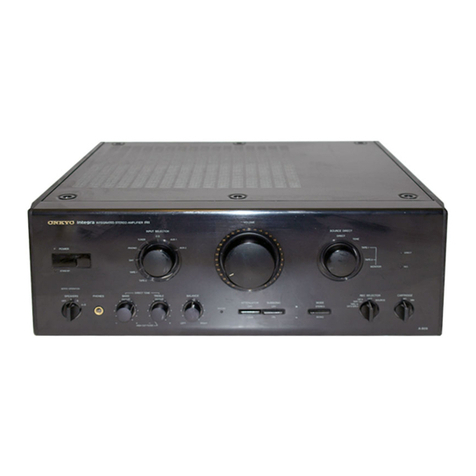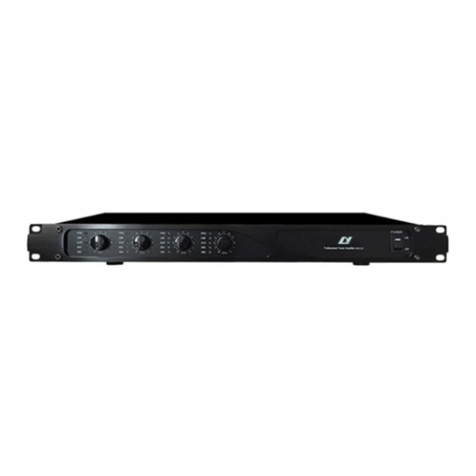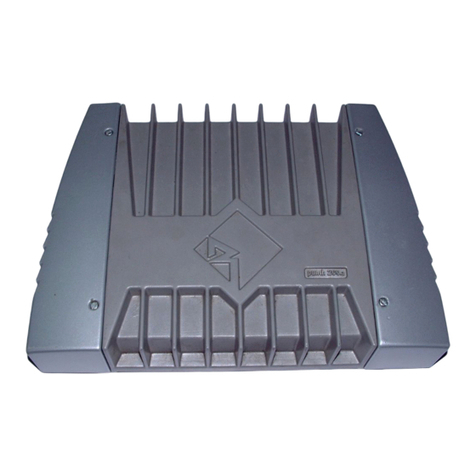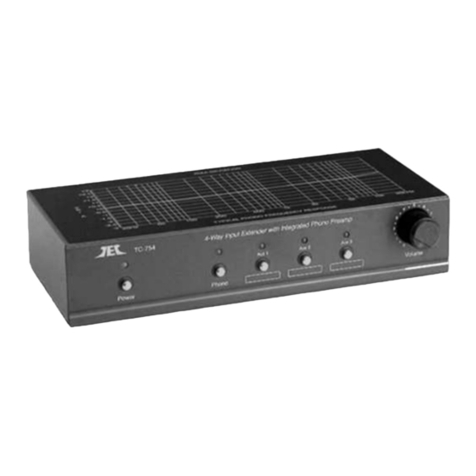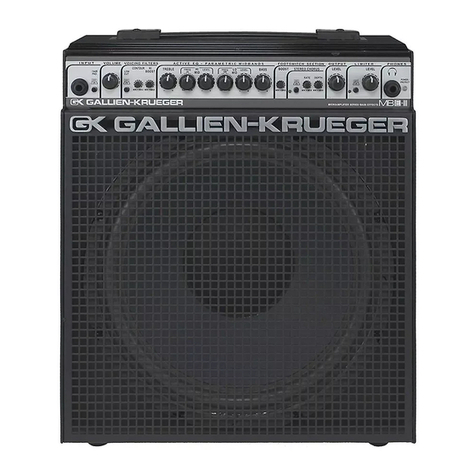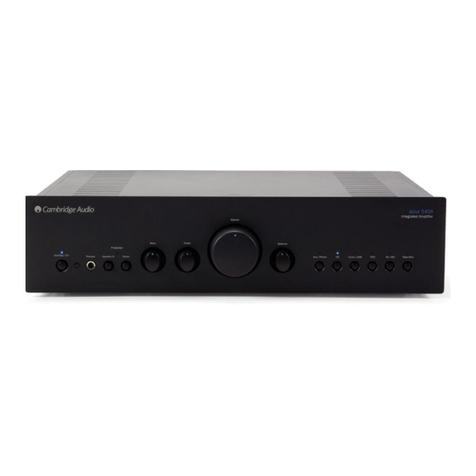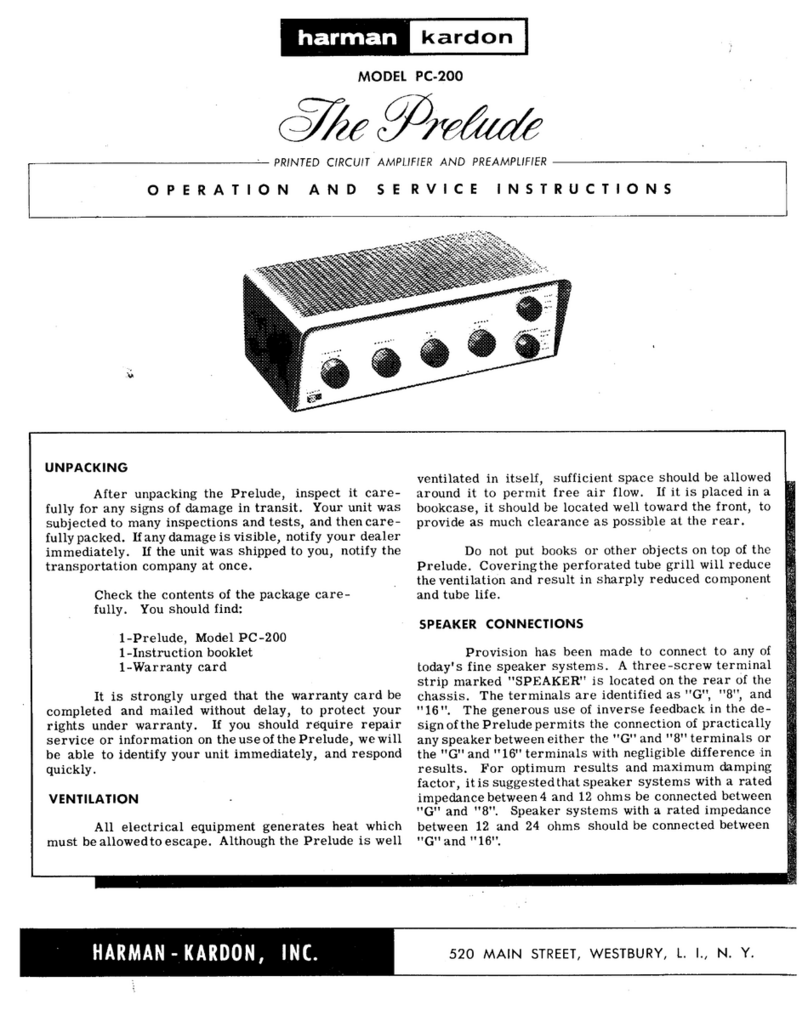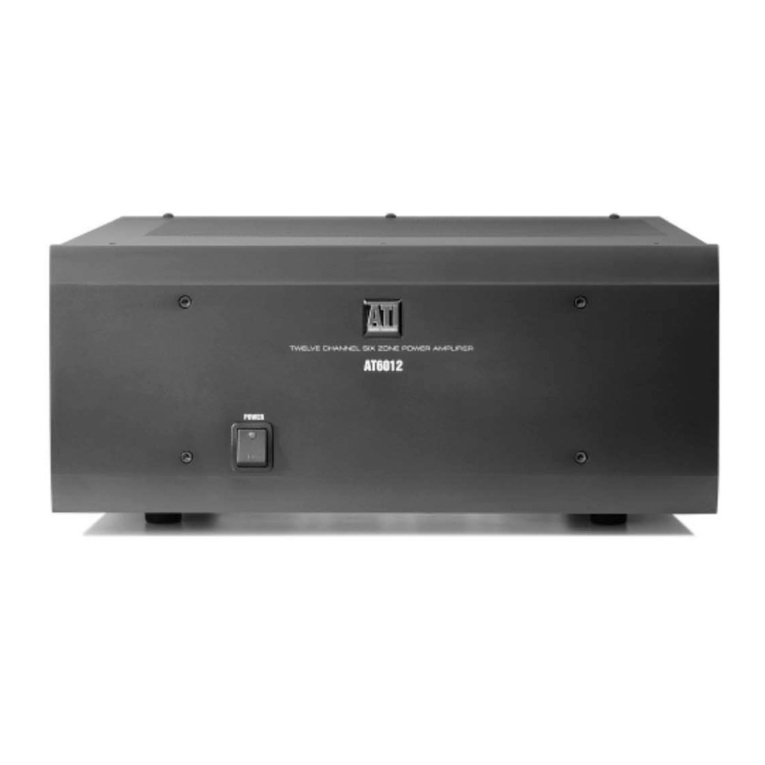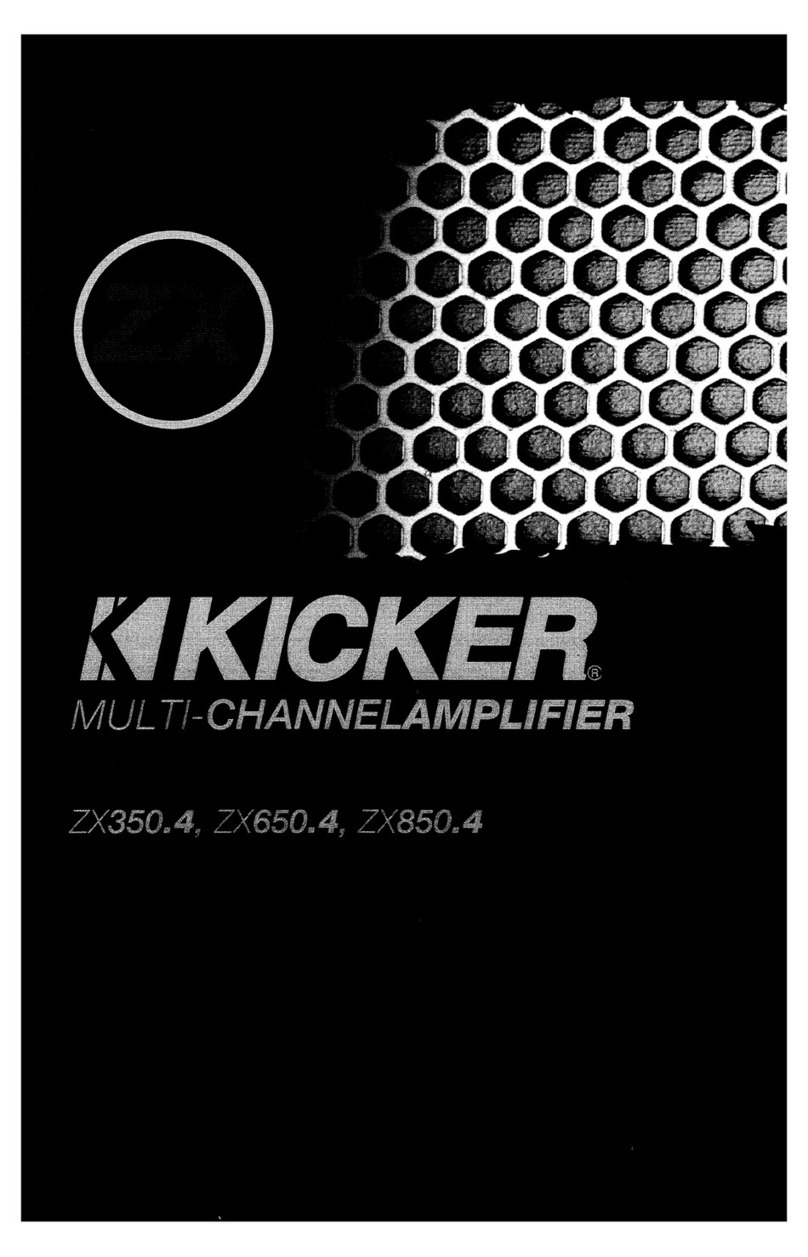Glensound GS-SW012 Installation guide

GS-SW012
2 Input Reference Microphone Amplifier for
Comparison of Microphones
PRODUCT DETAILS
6 BROOKS PLACE, MAIDSTONE, KENT, ME14 1HE. ENGLAND. TEL: +44 (0) 1622 753662
Visit our Website at www.glensound.com FAX: +44 (0) 1622 762330

Page 2of 15
Glensound Electronics Ltd
Thank you for choosing a new Glensound product.
All rights reserved.
Information contained in this manual is subject to change without notice, if in
doubt please contact us for the latest product information.
If you need any help with the product then we can be contacted at:
Glensound Electronics Ltd
1 –6 Brooks Place
Maidstone
Kent
ME14 1HE
United Kingdom
Telephone: +44 (0) 1622 753662
Fax: +44 (0) 1622 762330
EMAIL ADDRESSES
General enquires: office@glensound.co.uk
Technical enquires: techinfo@glensound.co.uk
Sales enquires: sales@glensound.co.uk

Page 3of 15
PRODUCT WARRANTY:
All equipment is fully tested before dispatch and carefully designed to
provide you with trouble free use for many years.
We have a policy of supporting products for as long as possible and
guarantee to be able to support your product for a minimum of 10 years.
For a period of one year after the goods have been despatched the Company
will guarantee the goods against any defect developing after proper use
providing such defects arise solely from faulty materials or workmanship and
that the Customer shall return the goods to the Company’s works or their
local dealer.
All non-wear parts are guaranteed for 2 years after despatch and any defect
developing after proper use from faulty materials or workmanship will be
repaired under this warranty providing the Customer returns the goods to
the Company's works or their local dealer.

Page 4of 15
EU DECLARATION OF CONFORMITY FOR:
GS-SW012
2 Input Reference Microphone Amplifier
This declaration of conformity is issued under the sole responsibility of the
manufacturer.
This equipment is manufactured by Glensound Electronics Ltd of Brooks
Place Maidstone Kent ME14 1HE is marked and conforms to the
following Union harmonisation legislation:
Low Voltage Directive: EN60065 and EN62368-1:2014
Emissions: BS EN55032:2015
Immunity: BS EN55035:2017
Signed for and on behalf of Glensound Electronics Ltd.
Gavin Davis, Managing Director
Maidstone, Kent, England
Date: 16/04/2020

Page 5of 15
RoHS DIRECTIVE
RoHS 2 Directive 2011/65/EU restricts the use of the hazardous substances
listed below in electrical and electronic equipment.
This product conforms to the above directive and for these purposes, the
maximum concentration values of the restricted substances by weight in
homogenous materials are:
Lead
0.1%
Mercury
0.1%
Hexavalent Chromium
0.1%
Polybrominated Biphenyls
0.1%
Polybrominated Diphenyl
Ethers
0.1%
Cadmium
0.01%

Page 6of 15
WASTE ELECTRICAL AND ELECTRONIC EQUIPMENT
REGULATIONS 2006 (WEEE)
Glensound Electronics Ltd is registered for business to business sales of
WEEE in the UK our registration number is:
WEE/JJ0074UR

Page 7of 15
GLENSOUND GS-SW012
Handbook Contents
Issue 1
Description Page No.
Contents
PRODUCT WARRANTY:................................................................................................................................................................ 3
OVERVIEW ........................................................................................................................................................................................ 8
GS-SW012 PANEL LAYOUT......................................................................................................................................................... 9
Front Panel.................................................................................................................................................................................. 9
Front Panel Features................................................................................................................................................................ 9
Side Panel..................................................................................................................................................................................12
Rear Panel Features ...............................................................................................................................................................12
AUDIO BLOCK DIAGRAM..........................................................................................................................................................13
SPECIFICATIONS ..........................................................................................................................................................................14
WIRING INFORMATION..............................................................................................................................................................15
Standard XLR Pin Outs..........................................................................................................................................................15
Standard Headphone Wiring .............................................................................................................................................15

Page 8of 15
OVERVIEW
GS-SW012 features two low noise reference microphones amplifiers designed for
testing and comparing microphones.
There are two headphone monitoring amplifiers enabling two users to listen to the
microphone inputs. A front panel switch selects which of the two inputs is being sent
to the outputs. Rather than providing a coarse direct switch between the two inputs
when the front panel select switch is operated a quick and clean cross fade is
performed between the two microphone inputs.
The microphone inputs use the very latest digitally controlled microphone amplifiers
and gain is accurately controlled in 1dB steps. The output of the microphone amplifiers
is fed into a low noise and wide dynamic range analogue digital converter (ADC),
before being fed into a DSP for cross fade and headphone level control.
The maximum input level of the microphone amplifiers has been carefully set to be
able to handle +16dB, however as there are no internal compressors or limiters to
prevent unwanted artifacts for reference monitoring an analogue pad is inserted
automatically when the input gain is set to +10dB (or lower) providing a further 14dB of
input attenuation bringing the minimum gain to -4dB and the maximum microphone
input level to before clipping +30dB.
In addition to the two headphone outputs, a balanced analogue XLR audio output is
also provided to allow external reference loudspeakers or recording equipment to be
used.
A small front panel LCD screen is provided to show the gain settings of the two
microphone inputs. This LCD also provides indication if the input pad is enabled on an
input or not.
48V phantom power is provided by a low noise DC:DC circuit and can be turned on/ off
for each of the two inputs by front panel self indicating toggle switches.
Each of the two inputs has its own 7 LED PPM meter providing accurate level indication
of the amplifiers output. The meters have a range of -18 to +18dB with a resolution of
6dB. This is sufficient for the user to allign the levels from two different microphones.

Page 9of 15
GS-SW012 PANEL LAYOUT
Front Panel
Front Panel Features
1. MIC A PPM
These 7 LEDs provide a visual indication of the A microphone input’s output
level. The marked scale is in dB and the ballistics follow a PPM style.
2. SELECTED LEDS
These two bright yellow LEDs provide a visual indication of which of the two
microphone inputs is currently selected and being routed to the headphone
and XLR outputs.
3. MIC B PPM
These 7 LEDS provide a visual indication of the B microphone input’s output
level. The marked scale is in dB and the ballistics follow a PPM style.
MIC A PPM
MIC B PPM
LCD DISPLAY
INPUT SELECT
SWITCH
MIC A PH
PWR
MIC B PH
PWR
SELECTED LEDs
MIC B GAIN
SWITCHES
HEADPHONE
VOLUMES
MIC A GAIN
SWITCHES

Page 10 of 15
4. MIC B GAIN SWITCHES
Pressing these switches adjust the B microphone’s input gain up or down in 1dB
steps. The current actual gain being applied to the B microphone input will be
displayed on the LCD display.
Once the minimum gain of 10dB is reached the unit automatically silently
switches in a 14dB hardware pad on the input and changes the mic amps gain to
compensate. This allows a minimum gain setting of -4dB. When the pad is
switched in the letter ‘P’ will appear next to the gain setting on the display.
5. HEADPHONE VOLUMES
These two rotary level controls each adjust their own headphone output
volume. Turning the control clockwise increases the output level and turning
them anticlockwise reduces the level.
The gain of the headphone outputs is set such that with volume control set in its
centre position the gain is 0dB. With the volume control turned fully clockwise
the gain is 10dB and with it turned fully anticlockwise the gain is -40dB.
6. MIC A GAIN SWITCHES
Pressing these switches adjust the A microphone’s input gain up or down in 1dB
steps. The current actual gain being applied to the A microphone input will be
displayed on the LCD display.
Once the minimum gain of 10dB is reached the unit automatically silently
switches in a 14dB hardware pad on the input and changes the mic amps gain to
compensate. This allows a minimum gain setting of -4dB. When the pad is
switched in the letter ‘P’ will appear next to the gain setting on the display.
7. MIC A PH PWR
This switch turns on/ off 48V phantom power to the A microphone’s input.
When the switch is in the down position then phantom power is turned on.
8. INPUT SELECT SWITCH
Pressing this switch toggles the headphone and analogue outputs between the
A/B microphone inputs. The LEDs next to the switch indicate which microphone
input is currently active.
Rather than providing a coarse direct switch between the two inputs when this
front panel select switch is operated a quick and clean cross fade is performed
between the two microphone inputs.
If this switch is pressed and held for more than three seconds then both
microphone inputs will be turned on together. When in this mode then the next
time the select switch is pressed the unit will revert to the A microphone input.

Page 11 of 15
9. LCD Display
The small backlit liquid crystal display (LCD) is used to show the gains of the two
microphone inputs.
After a period of inactivity the back light dims but will automatically resume full
brightness when any of the gain switches are pressed.
The gain levels are shown in dB and refer the amount of gain being applied to
the microphone input.
10. MIC B PH PWR
This switch turns on/ off 48V phantom power to the B microphone’s input. When
the switch is in the down position then phantom power is turned on.

Page 12 of 15
Side Panel
Rear Panel Features
11. DC INPUT
This is a 2.5mm barrel connector with centre +Ve. It can accept input voltages
between 9 and 15V DC and the external power supply should provide at least x
Watts.
12. MICROPHONE INPUTS
Two Neutrik XLRs are provided for the two microphone inputs. The inputs are
electronically balanced, rf filtered and protected against external phantom
power signals.
13. HEADPHONE OUTPUTS
The two headphone outputs are driven from their own amplifiers. Each output is
stereo, with the currently selected microphone routed equally to the left & right
ears.
The sockets are standard 6.35mm tip ring sleeve and are suitable for connecting
to headphones with impedances of between 32 and 1000 Ohms.
14. ANALOGUE OUTPUT
This electronically balanced audio output provides an analogue output signal of
the currently selected microphone.
DC INPUT
MICROPHONE
INPUTS
HEADPHONE
OUTPUTS
ANALOGUE
OUTPUT

Page 13 of 15
AUDIO BLOCK DIAGRAM
+48V
+48V
MIC IN
MICROPROCESSOR
MIC SELECT
GAIN/ PH PWR CONTROL
HEADPHONE/ OUTPUT
6.35mm STEREO
HEADPHONE SOCKET
6.35mm STEREO
HEADPHONE SOCKET
DC:DC
CONVERTER
EXT +9V to +15V -5V
+5V
+48V
DISPLAY
MIC IN 1 GAIN UP
MIC IN 1 GAIN DOWN
MIC IN 2 GAIN UP
MIC IN 2 GAIN DOWN
ADC
REMOTE CONTROLLED
PRE-AMP
10 to 60dB
ADC
GAIN/ PH PWR CONTROL
PPM
PPM
DSP
(MIX/ FADE, METERING,
& GAIN)
CONTROL SIGNALS
GAIN RANGE
REMOTE CONTROLLED
PRE-AMP
10 to 60dB
GAIN RANGE
AMPLIFIER
DAC
DAC
DAC
REMOTE CONTROLLED
14dB PAD
MIC IN
REMOTE CONTROLLED
14dB PAD

Page 14 of 15
SPECIFICATIONS
LINE OUTPUTS
Output Impedance
Interchannel Crosstalk
Maximum Output Level
Output Type
<50 Ohm
>101dB @ 0dB with1kHz tone
+18dB
Electronically balanced (can be wired
Unbalanced)
POWER
Connector
Input Voltage
2.5mm Barrel Centre Positive
+9 to +15V DC
INCLUDED ITEMS
Power Supply
Handbook
External Switch Mode
A5 paper handbook (download also available)
PHYSICAL
Size
Shipping Weight
Mechanics
Weight
Shipping Carton
150 x 100 x 40mm (W x D x H) (inc controls)
3kg
All aluminium construction, anodized and
laser etched front & rear panels
0.35 kg
Rugged export quality cardboard carton
610 x 420 x 120mm LxDxH
MIC INPUTS
Frequency Response
Input Gain Range
Input Gain Resolution
-0.2dB 50Hz to 20kHz
+65 to -4dB
Note: 14dB Pad inserted when gain reaches +10
1dB steps
Distortion (ref 0dBu output with 2dB gain)
Equivalent Input Noise
Phantom Power
0.006 @ 100Hz
0.003% @ 1kHz
0.004% @ 10kHz
125dB (22Hz - 22kHz Terminated 150 Ohms)
+48 Volts
Maximum Input Before Clipping
+30dBu
Input Impedance
>2k4 Ohm
Consumption
Total unit consumption <5 Watts
HEADPHONE OUTPUTS
Headphone Impedance
Volume Pot Range
Maximum Output Level
Circuit Type
32 - 1000 Ohms
-40 to +10dB (0dB at 12 O’clock)
+18dB (into 600 Ohms)
Auto-sensing output, provides correct
volume pot position for both high and
low impedance headphones.
ENVIROMENTAL
Operating Temperature
0 to +50 C (32 to 122 F)
o o
Storage Temperature
-20 to +70 C (32 to 158 F)
o o
Relative Humidty
0 to 95% non-condensing

Page 15 of 15
WIRING INFORMATION
Standard XLR Pin Outs
Standard Headphone Wiring
12
3
XLR SOCKET (FEMALE)
1 2
3
XLR PLUG (MALE)
TIP
RING
SLEEVE
STANDARD XLR AUDIO PINOUTS:
1: Ground/ Earth
2: INPHASE/ POSITIVE/ MIC +
3: MATE/ NEGATIVE/ MIC -
STANDARD HEADPHONE WIRING:
TIP: A/ LEFT Ear
RING: B/ RIGHT Ear
SLEEVE: Common/ Earth
Table of contents
Other Glensound Amplifier manuals

Glensound
Glensound DANTE VIRGIL OB Installation guide

Glensound
Glensound Dante Comedia Installation guide

Glensound
Glensound GS-HA001 Quick start guide
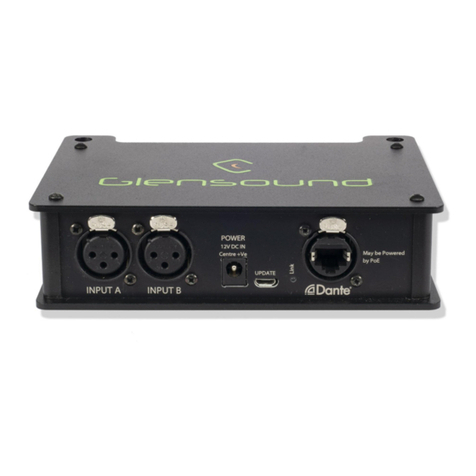
Glensound
Glensound Dante AOIP2M Installation guide
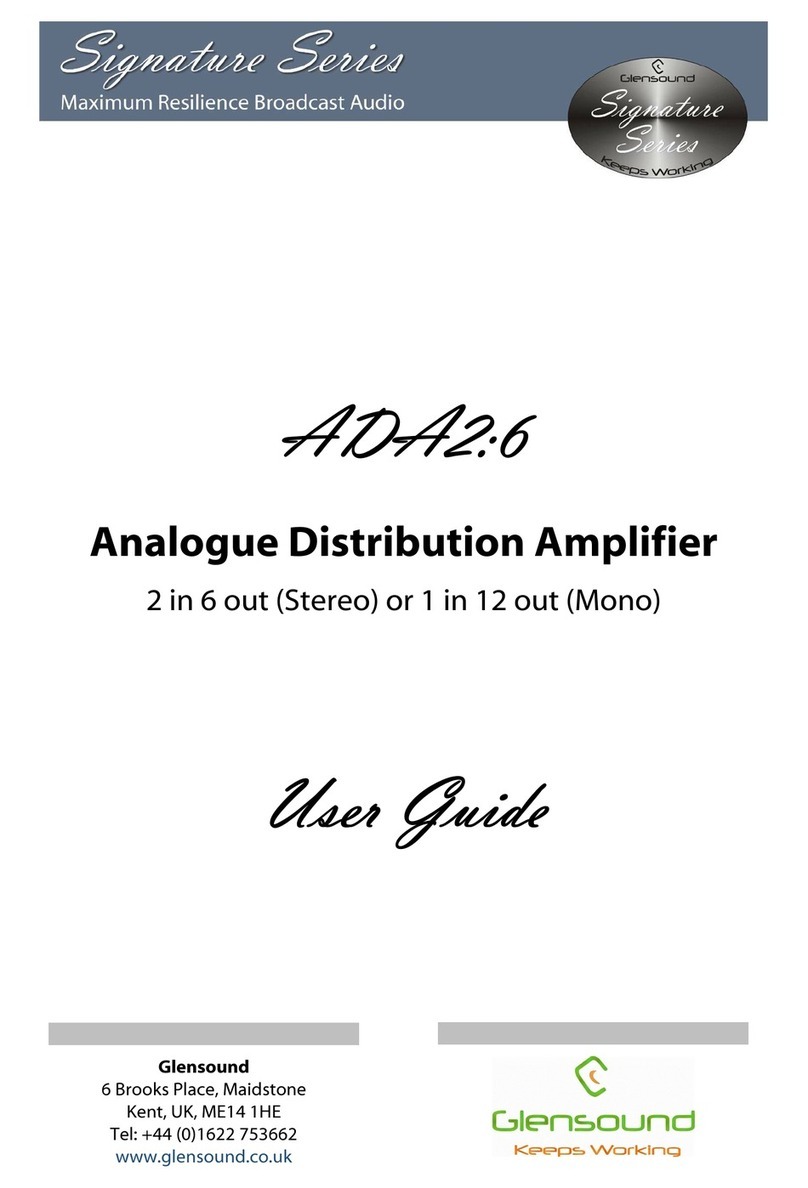
Glensound
Glensound ADA2:6 User manual
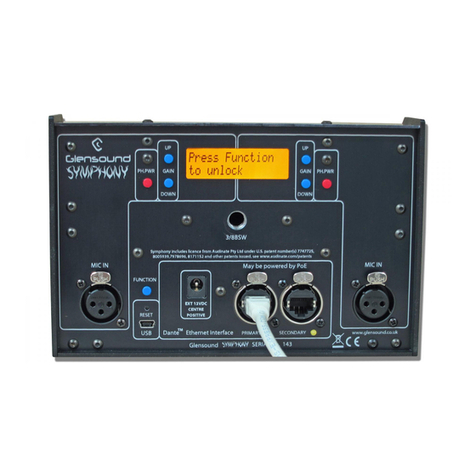
Glensound
Glensound SYMPHONY Installation guide

Glensound
Glensound Dante ATHENS 2 Installation guide
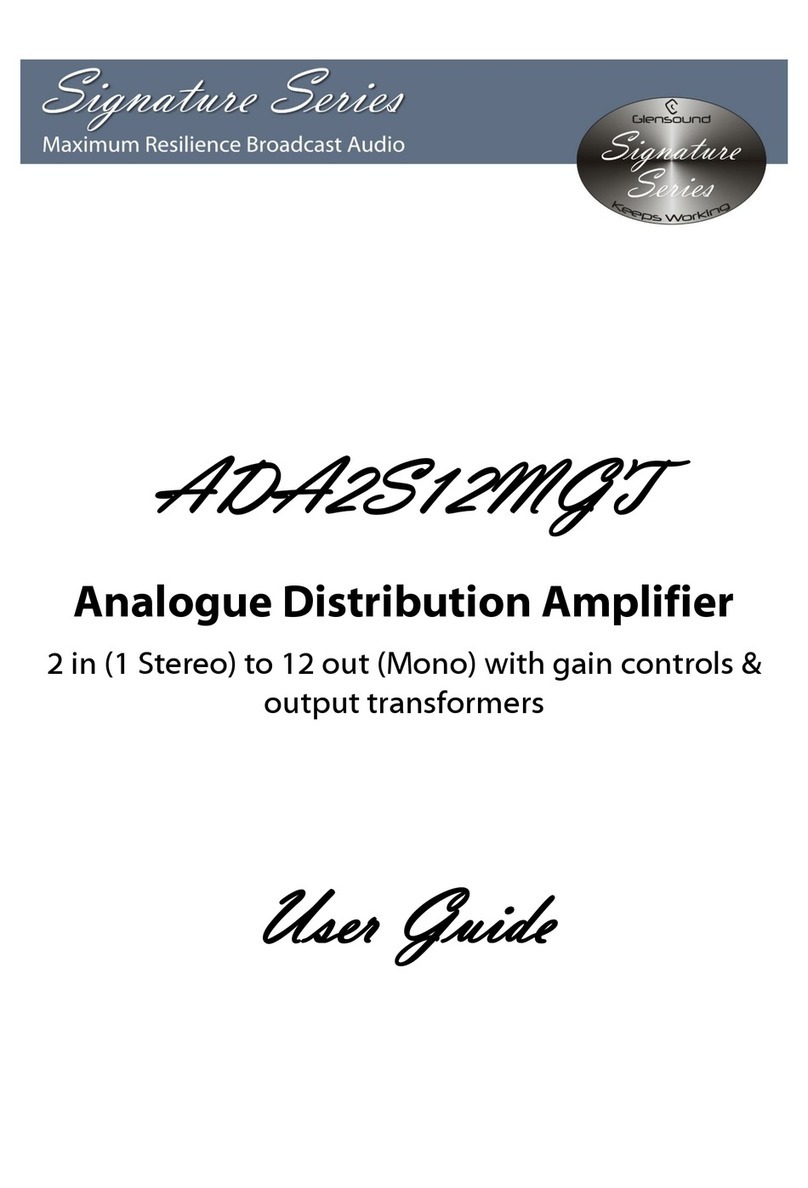
Glensound
Glensound Signature Series User manual
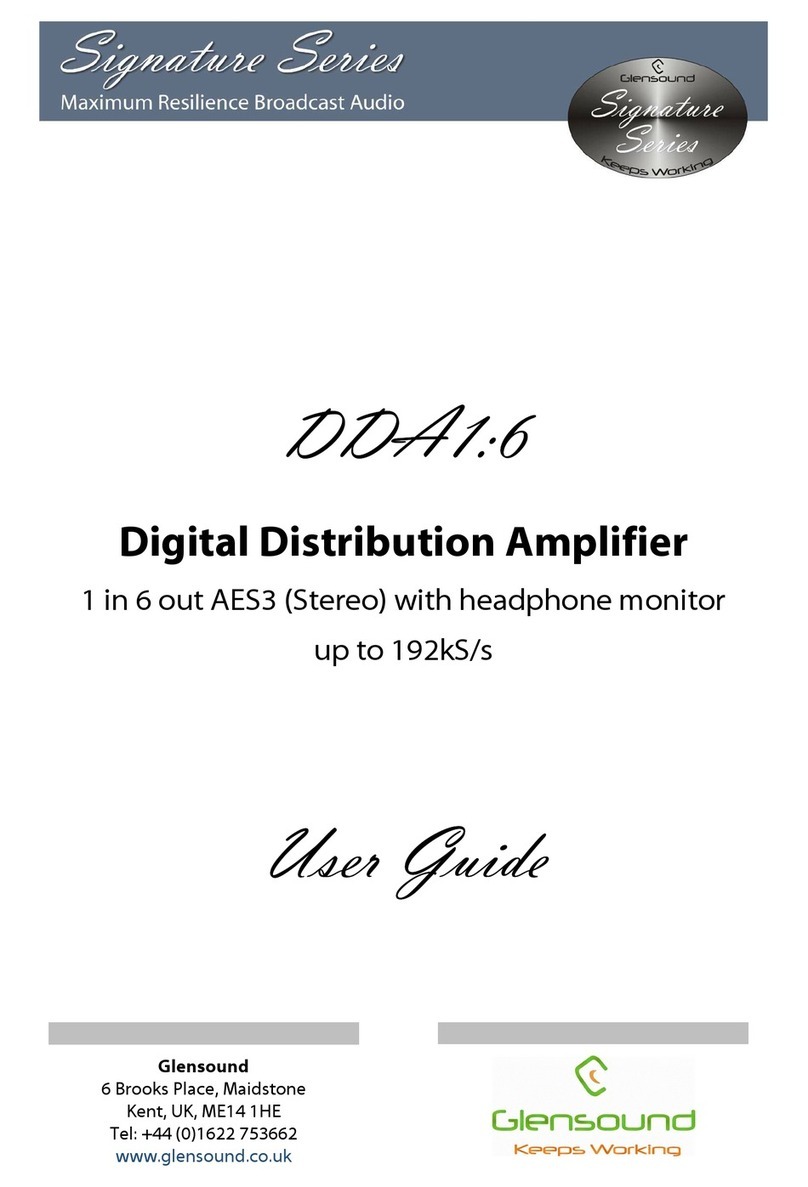
Glensound
Glensound DDA 1:6 User manual

Glensound
Glensound GS-HA013 Installation guide
